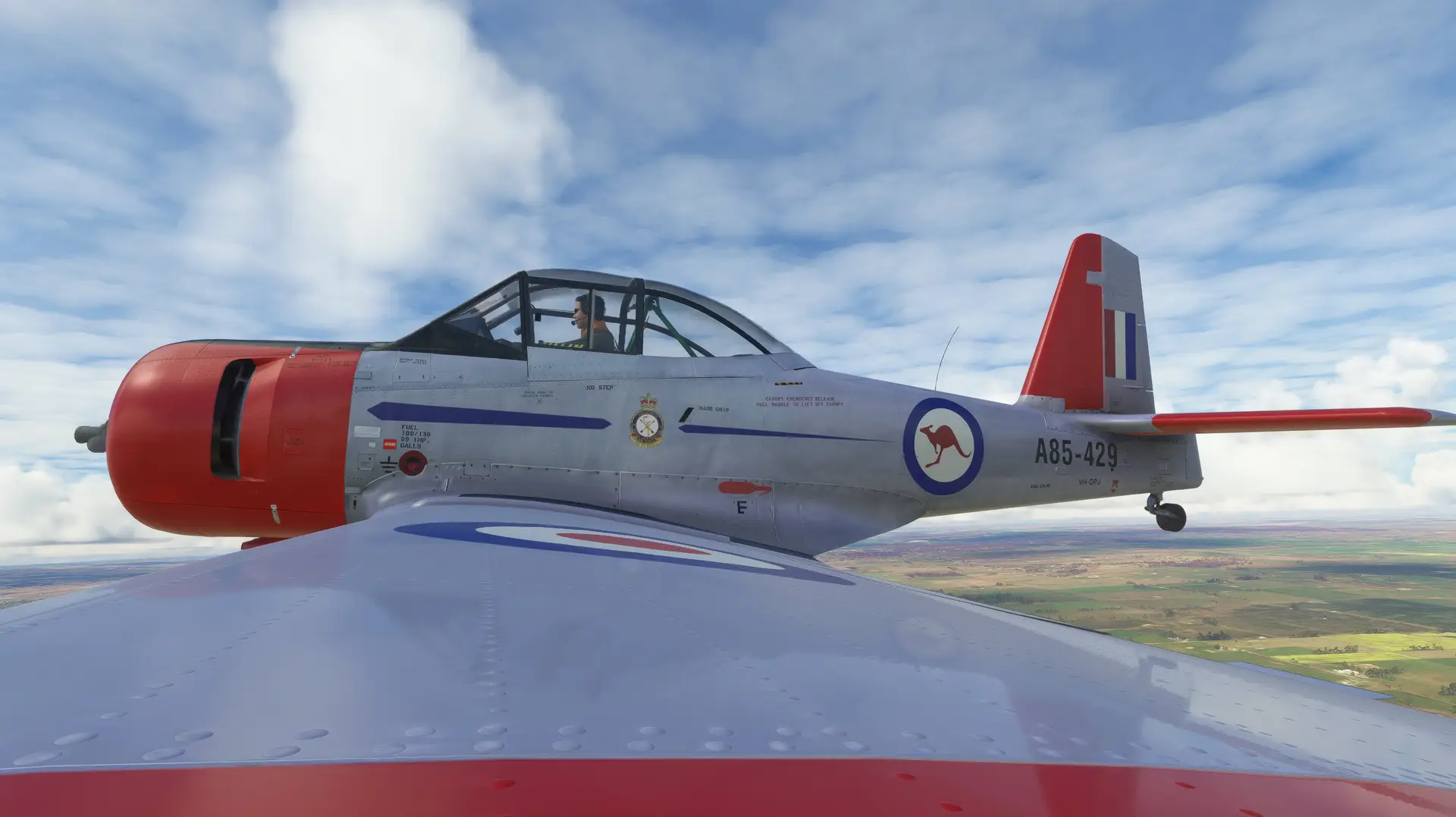- USD 17.99
- View more offers at FS Addon Compare
- Added: December 21, 2023
- Updated: February 17, 2025
The Winjeel is a two-three seat, low wing, fixed undercarriage tail dragger. Construction is all metal with fabric covered control surfaces. Power is provided by a 450hp Pratt & Whitney Wasp Junior nine cylinder radial engine driving a two bladed Hamilton Standard variable pitch propeller.
The Winjeel was the Royal Australian Air Force's primary piston trainer from 1955 to 1975. The Winjeel replaced the Tiger Moth and Wackett aircraft and was itself replaced by the NZAI CT-4 Airtrainer.
A total of 62 Winjeels were produced from 1954 to 1958 and delivered to the RAAF. 2 prototype aircraft (CAC-22) were produced in 1951 and required extensive testing and modifications to arrive at the final design of the Winjeel.
Original plans called for the prototypes to be fitted with Pratt & Whitney Wasps and CAC's own engine design in the production aircraft. This engine was a seven cylinder radial called the R-795 Cicada. In 1951 the Cicada program was scrapped and Winjeels were all fitted with Pratt & Whitney Wasp Junior engines (the same engine used in De Havilland Beavers).
Interestingly, for a trainer, the Winjeels had three seats. Both the RAF and RAAF had specified three seats for their post WWII trainers. The theory being it would be possible to train two pilots at once, one being instructed whilst the other watched. This theory did not last long
FEATURES
- 4 model variants. Vintage and modern normal models as well as vintage and modern FAC variants
- 3 custom pilot models are available. In addition the pilot and passenger can use MSFS default pilot models.
- Full checklists in MSFS
- Includes 10 different repaints
- 3 engine start levels of difficulty from easy to hard
- Autostart is supported for those who would like a quick engine start
- Select Easy or Hard engine realism. In Hard mode oil consumption can lead to engine failure and sparkplug fouling is simulated
- High FPS propeller animation. Custom code provides the smoothest possible propeller animation including accurate propeller stopping animations
- Outside sound spill. Opening the canopy or windows will mix the outside engine sound with the interior. The outside sound level can also be mixed with the interior sound using the Tablet.
- Oil consumption. Set oil levels in the fuel and payload screen. In Hard engine realism mode low oil levels will lead to eventual engine failure
- Sparkplug fouling in Hard engine realism mode. At low engine RPM carbon deposits will build up and affect engine performance.
- Persistent fuel and oil levels. Automatically saves the fuel and oil levels at the end of each flight and reloads them on the next flight (can be turned off using the Tablet)
- GPS available. The default Aera GPS is available as a popup which can be placed into various positions along the glareshield depending on the user's needs
- Tablet available. A popup tablet provides access to user preferences as well as a simple autopilot and radios if required. A page for the engine start procedure makes it easy to see the state of the aircraft
- User preferences. Various user preferences are automatically saved at the end of each flight. User preferences can be set either by clicking on items in the cockpit or by using the Tablet popup
- Windscreen transparency. Switch between clean and dirty windscreens using the Tablet preferences page
- Pilot's Handbook PDF is available in the package's Documentation folder
Version 1.1
- Fixed glass windows not being animated correctly
- Avionics switch is set to always when aircraft is loaded
- Improved prop windmilling when plane is on the ground, engine is off and pointed into a headwind (it will still windmill if the wind is above 20kts though)
- Fixed engine starting smoke effect persisting for people with a hardware starter switch. Engine smoke will only appear when going from non-combustion to combustion
- Fixed mixture lever position not updating in the Tablet display























